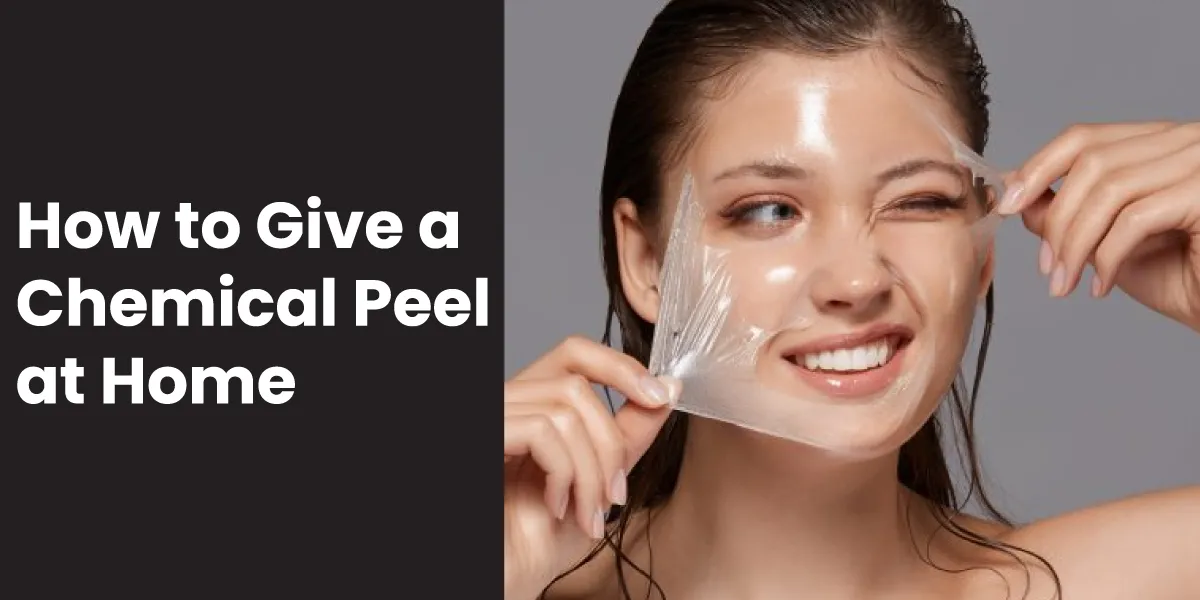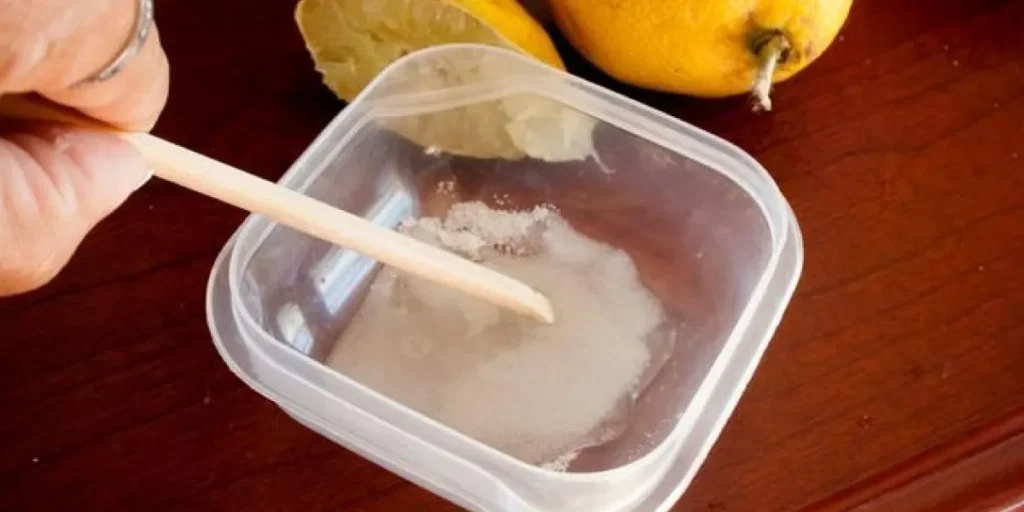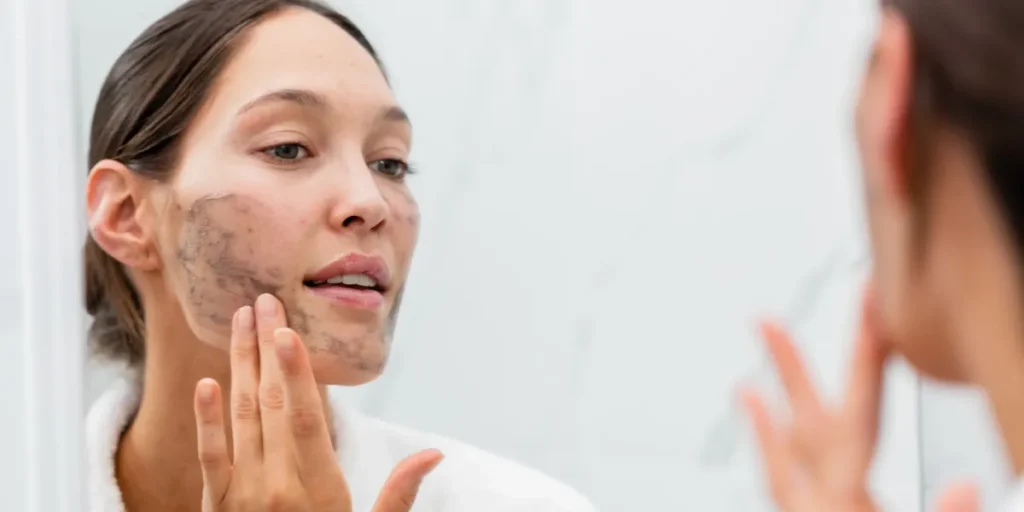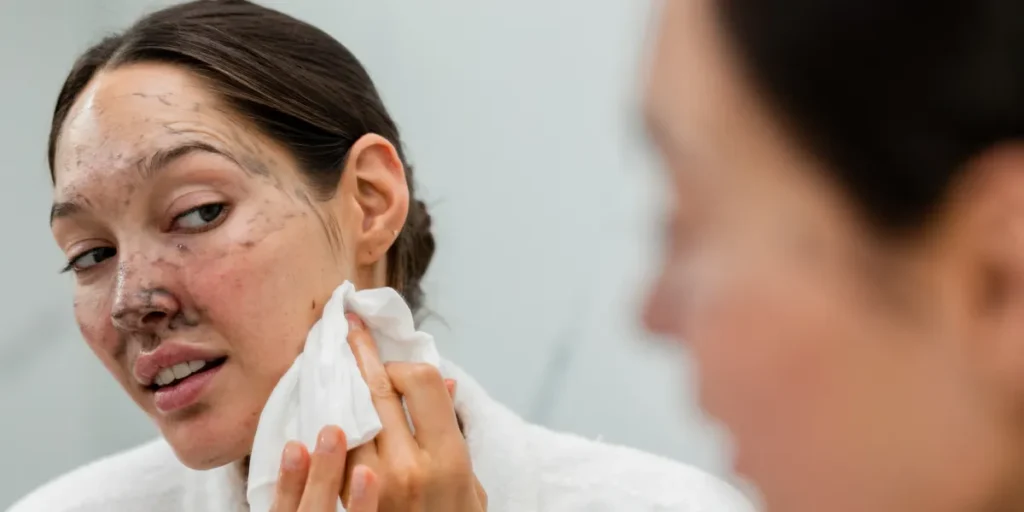Become an Aspen Aesthetics VIP
and receive $25 off any service!

Longing for brilliant skin, however, spa medicines seem far off. In all honesty, you can accomplish a gleaming look from the solace of your own home with a Do-It-Yourself skin rejuvenation procedure. Chemical peels use acids to delicately shed dead skin cells, uncovering a fresher, clearer layer. But how can you give a chemical peel at home?
Clean the skin with a gentle cleaning agent, apply the peels equally, screen for bothering, spot test, and saturate and stay away from the sun after a substance peel at home. Fix-test a discrete district before applying the peels to the face. Peel recurrence changes on power and may shift for delicate skin.

Knowing how to give a chemical peel at home for acne makes sense. First, you must have a collection of important medicines and other elements to perform the task. You need to go for;
Clean up with a delicate chemical to eliminate cosmetics, soil, and oils. Wipe your skin off with a perfect towel.
Use a toner to adjust your skin’s pH level. Permit your skin to totally dry.
To shield delicate regions like the sides of your eyes, lips, and nostrils from the peels, apply oil jam or a thick lotion.
Use a cotton pad or utensil brush to apply the substance peels uniformly across your face. Avoid the touchy regions you protected before.
Follow the prescribed time for the peels to remain on your skin, normally between 1 and 10 minutes, contingent upon the peels’ solidarity and your skin’s resistance.
If the peels require balance, apply the neutralizing solution (frequently a combination of baking soda and water) after the dispensed time. If the peel is self-killing, avoid this step.
Completely wash your face with cool water to eliminate the peel arrangement. Be delicate and try not to bother the skin.
Apply a liberal amount of cream to hydrate and relieve your skin. Choose a non-comedogenic and scent-free item.
For the following few days, you will be guaranteed to use a wide range of sunscreen with SPF 30 or higher. Avoid direct sun exposure, as your skin will be more touchy. Now, you can follow the same process for a glycolic acid peel at home.

Home chemical peels can be protected if appropriately formed and used; however, they can increase the risk of diseases, cause redness and scabbing, deteriorate pigmentation, and over-peel.
To avoid these dangers, consult a dermatologist, begin with a lower-strength peel, adhere to item guidelines, and use sun security. After a substance peels, use sun protection and saturate to forestall further bother. Following these rules, you can securely perform at-home substance peels and achieve desired skin results.
At-home chemical peels are successful for treating hyperpigmentation, including TCA 15% Skin peels, Alpha Hydroxy Corrosive (AHA) feels like Glycolic half Gel peels, Common AHA 30% + BHA 2% peeling Arrangement, Salicylic 10% Gel peels, REN Clean Skincare AHA BHA Liquid Exfoliant, and Catalyst peerless got from natural products like pineapple or papaya.
These chemical peels for hyperpigmentation can be used at home to diminish age spots, imperfections, skin breakout scars, and more profound kinks. However, they ought to be used with caution and a dermatologist’s recommendation.

Indeed, you can do glycolic peels at home. However, it’s vital to tread carefully to guarantee security and viability. Glycolic corrosive, an alpha hydroxy corrosive (AHA), is famous for its capacity to peel the skin, further develop the surface, and address issues like scarcely discernible differences, hyperpigmentation, and skin breakout.
Chemical exfoliation fluctuated in length, relying upon the sort and wanted results. Light chemical exfoliation is delicate and appropriate for skin inflammation, rosacea, dry skin, and scarce differences.
Medium chemical exfoliation is more severe and can cause observable stripping. At the same time, profound compound strips are more extraordinary and can cause critical stripping and redness—home compound strips commonly last 3 to 10 minutes.
After the strip, a killing arrangement is applied to eliminate the synthetic arrangement. Recuperation time for light strips is 1 to 7 days, medium strips 1 to about fourteen days, and profound strips 2 to 90 days.
The recurrence for light strips is fourteen days for skin breakout and dry skin, medium strips 2 to about a month for skin breakout and hyperpigmentation, and profound strips 2 to 4 months for more severe skin issues. Continuously adhere to the directions given to your synthetic strip item and counsel a dermatologist if you have any worries.
They Can be bought for home use, yet observing security guidelines is significant. Pick items that fit corrosive focuses to stay away from aftereffects.
Choose items intended for customer use and adhere to directions. Consult a dermatologist if you have touchy skin or explicit circumstances. Follow the prescribed use recurrence to avoid skin bother and harm. Focusing on security, selecting items cautiously, and adhering to guidelines are pivotal for ideal outcomes.
At-home chemical peels are best left to experts, such as dermatologists, who can evaluate skin, suggest the right strength, and guarantee safe application for ideal outcomes.
Rather than synthetic strips, consider utilizing gentler shedding fixings like AHAs or BHAs in your skincare schedule. Consult a dermatologist for many different kinds of feedback about substance strips or elective shedding techniques.